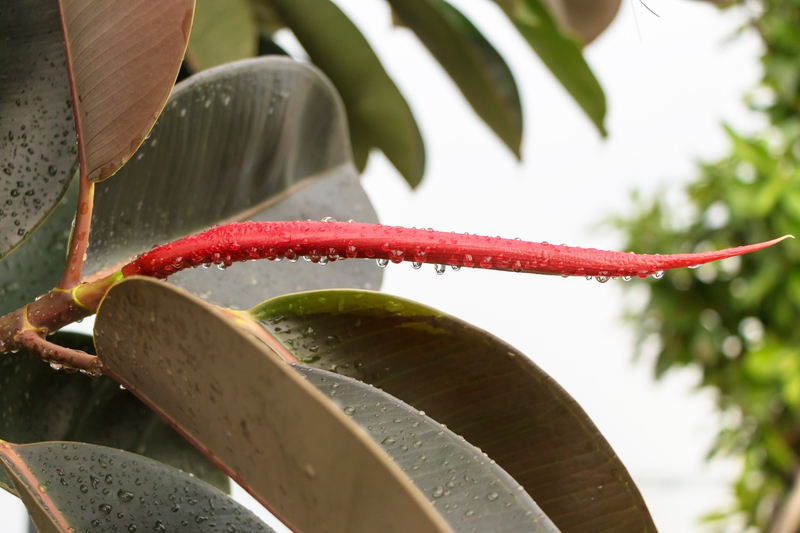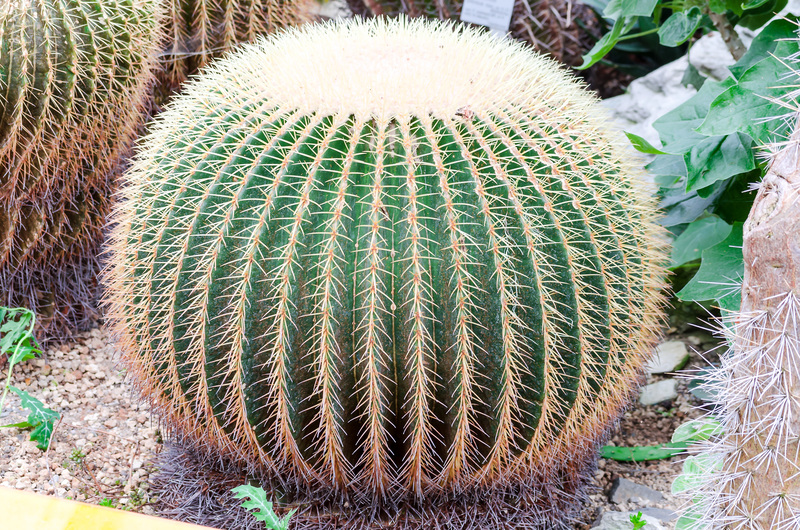Creating an Outdoor Haven for Dogs and Plants Alike
Posted on 23/06/2025
Creating an Outdoor Haven for Dogs and Plants Alike
Embracing the outdoors is a joy for both people and their four-legged companions. But striking a balance between a dog-friendly garden and a lush botanical retreat can be a tricky challenge. How can pet owners cultivate a backyard sanctuary that's safe, stimulating, and beautiful for both pups and plants? This comprehensive guide will walk you through every step of creating an outdoor haven for dogs and plants alike. From pet-safe landscaping ideas to environmental enrichment and garden maintenance, you'll discover how to nurture a vibrant ecosystem where wagging tails and blooming petals coexist in perfect harmony.
Designing a Dog-Friendly and Garden-Loving Landscape
Dog owners and plant lovers don't have to compromise on their ideal backyard. With thoughtful planning, it's possible to design an outdoor space that caters to canine comfort while allowing your plants to flourish. Start with these key considerations:
1. Assess Your Outdoor Space
- Size & Shape: Large active breeds might need more running room, while small dogs may feel safest in cozy nooks.
- Sunlight & Shade: Plants and pets both benefit from zones of full sun and cool shadow.
- Existing Features: Take stock of fences, patios, slopes, and mature trees. These will influence your landscaping decisions.
2. Put Safety First: Secure Boundaries & Non-Toxic Choices
- Fencing: Ensure fences are high and secure to keep adventurous pups safe. Regularly inspect for gaps and weak points.
- Non-Toxic Plants: Some classic ornamentals are hazardous to dogs. Favor pet-safe plants such as marigolds, dog-safe herbs (basil, thyme, rosemary), and hardy shrubs.
- Avoid Chemicals: Skip synthetic fertilizers and choose organic pest solutions.
3. Define Zones for Relaxation, Play, and Botanicals
- Play Area: Designate a section for fetch, digging, and training. Tough grass like Bermuda or artificial turf survives wear and tear.
- Tranquil Retreats: Add shady spots with comfy beds or raised platforms for lounging pups.
- Planting Beds: Use low fences or raised planters to protect delicate specimens from trampling paws.

Plant Selections: Gorgeous, Hardy, and Canine-Safe
The key to a lush, resilient dog-friendly garden is choosing varieties that are both beautiful and safe for pets. Here are some top options that enhance any landscape and thrive alongside active dogs:
1. Pet-Safe Perennials and Annuals
- Sunflowers - Cheerful, tall, and non-toxic.
- Snapdragons - Vivid colors, sturdy and safe for dogs.
- Roses - Most roses are safe, but beware of thorns.
- Calendula - Gentle on tummies if nibbled.
2. Scented Herbs
- Lavender - Non-toxic & repels fleas naturally.
- Mint, thyme, basil, oregano - Hardy, provide sensory pleasure, and are edible for both humans and canines.
- Lemon balm - Calming properties and safe for all.
3. Hardy Groundcovers and Shrubs
- Creeping thyme - Survives foot traffic and gives off pleasant scent when trampled.
- Boxwood hedges - Dense, slow-growing, and they deter dogs from wandering into beds.
- Camellia - Yields abundant blooms; non-toxic and attractive year-round.
4. What to Avoid
- Highly toxic plants - Oleander, sago palm, foxglove, lilies, and azaleas are all dangerous for dogs.
- Sharp or spiky plants - Agave, holly, and certain cacti can injure curious noses.
- Cocoa mulch - Contains theobromine, just like chocolate, which is toxic for pets.
Innovative Dog-Friendly Landscaping and Garden Features
Once you've chosen the right plants, personalize your outdoor haven to foster healthy habits and keep both dogs and greenery thriving. Try these practical and creative backyard ideas to optimize your space:
1. Durable Pathways and Surfaces
- Gravel or decomposed granite: Tough, low-maintenance, and forgiving on paws.
- Paw-friendly pavers: Avoid sharp or heat-retentive surfaces. Use natural stone, brick, or composite decking.
- Turf and grass alternatives: Artificial grass is durable and cleans easily, while clover lawns resist urine burns and stay soft underfoot.
2. Secure Play Enclosures
- Create a fenced-off dog run for high-energy breeds.
- Install a sandbox or digging pit to direct natural digging instincts away from cherished flower beds.
- Set up agility equipment like tunnels, ramps, and hoops for engaging playtime.
3. Refreshing Water Features
- Include a shallow splash pool or fountain with circulating water--great for cooling off on hot days.
- Ensure water features have secure borders and gentle slopes for safe entry and exit.
- Regularly clean and monitor water to avoid algae or mosquitoes.
4. Shady Retreats & Rest Zones
- Shade sails or pergolas: Provide cooling shelter for both people and pets.
- Doghouses or raised decks: Give your dog a dry, comfortable spot for midday naps.
- Natural shade: Small groves of non-toxic trees like crepe myrtle or serviceberry also boost your garden's biodiversity.
Nature-Based Enrichment: Letting Dogs Explore with Their Senses
A truly great outdoor haven for dogs stimulates all of your pet's senses. It should foster healthy movement, scent exploration, and gentle interaction with the environment. Here's how to turn your yard into a paradise for enrichment:
1. Sniffing Paths and Scent Gardens
- Plant fragrant herbs and aromatic flowers to encourage natural sniffing behaviors.
- Design meandering paths with textured surfaces for paws to explore.
- Change up the scents with seasonal blooms or by adding wind chimes and hanging treats.
2. Sensory Planting
- Textured foliage: Lamb's ear, ferns, and ornamental grasses add tactile experiences for curious noses and feet.
- Sound and movement: Bamboo or ornamental grasses rustle in the breeze, amusing both pets and people.
- Edible nibbles: Plant small borders of strawberries or blueberries for rewards--just ensure dogs don't overindulge!
3. Hide and Seek and Foraging Games
- Hide treats or toys in safe corners of the yard to sharpen your dog's scent-tracking skills.
- Bury favorite chew toys or bones in a dedicated digging area for healthy, happy play.
How to Protect Your Plants--And Your Pup--For a Flourishing Backyard
When dogs and gardens share outdoor space, a few gentle precautions ensure that both parties stay safe and healthy. Try these best practices for harmonious coexistence:
1. Raised Beds and Barriers
- Plant delicate specimens in raised beds or behind attractive garden fencing.
- Low stone walls or log borders discourage digging and paw traffic through prized beds.
2. Training and Routine
- Teach basic cues like "leave it," "stay," or "off" to respect garden boundaries.
- Reward your dog for choosing their designated play area rather than trampling plants.
- Supervise outdoor time until your dog reliably avoids restricted areas.
3. Manage Mud and Mess
- Provide dry, paw-cleaning mats at entryways to protect floors and paws.
- Install a pet rinse-off station outdoors for easy post-play cleanup.
4. Use Pet-Safe Treatments
- Choose natural pest control and fertilizers; avoid insecticides or herbicides labeled as hazardous to pets.
- Check your mulch is free from cocoa, dyes, or chemical additives.
Seasonal Maintenance for a Thriving Dog-and-Garden Haven
Caring for a backyard shared by dogs and plants requires consistent, thoughtful maintenance. Here are some guidelines to keep your outdoor sanctuary in peak condition all year long:
1. Routine Mulching and Soil Protection
- Apply a fresh layer of pet-safe mulch in spring and fall to retain moisture and deter weeds.
- Consider rubber or wood chip mulch for high-traffic zones--these buffer the soil and minimize muddy paws.
2. Lawn Upkeep
- Flush dog urine spots with water to prevent yellowing--ryegrass and fescue are especially resistant breeds.
- Keep grass clipped slightly longer to withstand roughhousing and minimize bald patches.
3. Monitor Plant Growth & Paw Paths
- Inspect plants regularly for broken stems, especially after energetic play sessions.
- Prune and train shrubs away from fence lines, discouraging escape attempts and border digging.
4. Inspect Hardscapes and Equipment
- Check fences, gates, and agility equipment for safety and stability every few weeks.
- Keep pathways clear of debris to reduce tripping hazards for dogs and humans alike.
Welcoming Wildlife and Sustainability in Your Dog-Friendly Garden
A backyard oasis for dogs and plants can become a haven for indigenous wildlife, too. Encourage pollinators and other beneficial creatures with these eco-friendly enhancements:
- Provide native nectar plants for bees, hummingbirds, and butterflies--think milkweed, coneflower, or salvia.
- Leave a portion of your garden slightly wild for insects and ground-nesting birds (ensure this area is fenced off from curious pups).
- Collect rainwater for irrigation and reduce waste with compost bins for lawn and kitchen scraps (always keep bins dog-proof).
- Avoid using pesticides that harm beneficial insects or risk contaminating the ecosystem you're building.

Conclusion: Outdoor Harmony for Dogs & Plants
Creating an outdoor haven for dogs and plants alike is both a science and an art. With mindful planning, wise plant choices, and regular care, your backyard can be a sanctuary where canine companions thrive amid greenery, vibrant blooms, and the bounty of nature. Whether you're seeking relaxation, play, or the joy of gardening, remember that your outdoor space can nurture happiness, health, and harmony for all living things.
Take these insights to heart, and start transforming your backyard into an inviting, enchanting outdoor paradise - for you, your dog, and your garden!
Frequently Asked Questions
What are some signs that my plants are being harmed by pets?
Look for trampled foliage, broken stems, dug-up roots, or yellow patches from urine burn. Creating barriers and training your dog to avoid certain areas can prevent most issues.
How can I keep my dog entertained outdoors without destroying the garden?
Provide designated play zones, digging pits, and engaging toys. Supervise initially and redirect unwanted behaviors with positive rewards.
Which ground covers are safest for active dogs?
Consider creeping thyme, clover lawns, or artificial turf. They're soft underfoot, resistant to wear, and non-toxic.
Can I use regular mulch in a dog-friendly yard?
Choose pet-safe mulch made from pine, cedar, or untreated hardwood. Avoid cocoa mulch and dyed mulches, which may contain harmful chemicals.
How do I deter dogs from digging in my flowerbeds?
Install low fencing, use sharp gravel as a deterrent, and reward your pet for staying in approved areas. A sandbox or digging pit can redirect their instincts productively.

